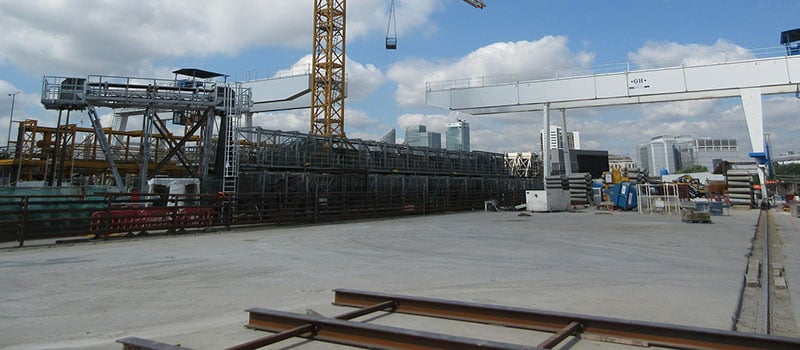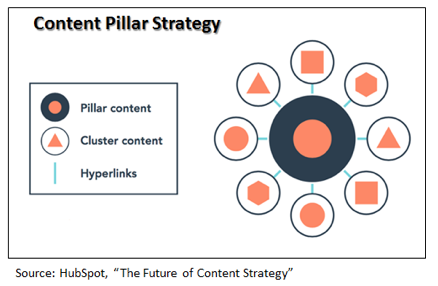Building a Bridge Between Your Company and Its Clients and Prospects
The other day I was reading a story about the construction of the soon-to-be-completed Tappan Zee bridge.
For those of you who don’t live in New York State or in in the greater New York City metro area, this is a $4 billion (that’s right … with a “B”) construction project scheduled to be completed in 2018 to replace an existing bridge over the Hudson River connecting Rockland and Westchester Counties, and serving as a main artery bringing traffic into New York City.
 Think about this: 14 million miles of main span cables, 50 miles of foundations pilings, 300 thousand cubic yards of concrete, and 220 million pounds of steel, 8 towers each over 400 ft. high, 3,000+ workers; over 1,500 subcontractors....
Think about this: 14 million miles of main span cables, 50 miles of foundations pilings, 300 thousand cubic yards of concrete, and 220 million pounds of steel, 8 towers each over 400 ft. high, 3,000+ workers; over 1,500 subcontractors....
Wow. That’s a lot of infrastructure.The story got me thinking about the infrastructure required to build and execute a state of the art marketing program. Just like the fact that the bridge can’t open to traffic until its infrastructure is complete, your firm’s visibility, leads and new business can’t fully realize its potential until your marketing infrastructure is complete.
Here’s my list:
- Analytics/metrics— Virtually every vendor of marketing technology includes analytics as part of their package. The best known is Google Analytics, the most comprehensive is HubSpot’s. Analytics are a fundamental piece of marketing infrastructure because they give insights as to what’s working, what’s not working, and where your investments are paying off.
- Blog— There’s no lack of data or evidence that concludes that blogging needs to be a fundamental part of marketing infrastructure. Blogs build personal and corporate brands. They are fundamental to getting high organic search rankings. They serve as a vehicle for promoting lead generation offers. They can be leveraged for multiple content marketing purposes, and more.
- Case Studies and Testimonials— You need to publish case studies and testimonials on your website, as they represent a fundamental piece of marketing infrastructure that you can use to build your credibility, while giving prospects some measure of comfort that your firm has faced and solved problems similar to theirs.
- Content — Articles, blogs, checklists, videos, podcasts, quizzes…. there’s not a lack of different types of content that can be part of your fundamental marketing infrastructure. Today, content marketing builds brands, credibility, and establishes subject matter expertise. Your marketing infrastructure needs a base of content available for download from your website and you need a plan to continually supply fresh content.
- CRM— A CRM should be a fundamental part of your firm’s marketing infrastructure. It’s tough to nurture a prospect through a sales funnel without a CRM, and from a management perspective, it’s tough to assign and assess accountability without records of interactions between the firm and its prospects.
- Email Marketing Capabilities— To state that email is a fundamental piece of marketing infrastructure seems somewhat anachronistic (although I do remember a time when…). However, today’s email platforms are significantly different than those of yesteryear in terms of their functionality and capabilities, from being able to time the release of an email to capabilities to do “smart” emailing.
- eNewsletter— As part of your marketing infrastructure, every niche practice should have its own unique eNewsletter. The technology to facilitate this is available, and the strategic possibilities of using this piece of infrastructure are boundless. Your infrastructure needs to be able to accommodate a mission of delivering the right message to the right prospect at the right time.
- Marketing Automation Technology— If the sales process of your firm’s services calls for multiple touches with a prospect, then marketing automation is a fundamental need. The short and simple: it allows you to create a series of automated marketing messages that work to continually drive a prospect thought the sales funnel, with notifications to you when the prospect has engaged with your communications.
- Marketing Database, Clean and Current— The bane of just about every company is the marketing database. Having an accurate, clean marketing database is in our top three of marketing infrastructure needs. It’s not easy, it’s resource intensive, it’s transient, and it can be expensive, but yet, you can’t deliver marketing to your target markets if you don’t have the right list constructed the right way. Many firms fail to get over this critical speed bump.
- Marketing/Sales Service Level Agreement— Having your firm’s executive management, marketing committee, niche practice leaders, sales team and marketing department on the same page, working toward the same objectives is a fundamental piece of marketing infrastructure. In fact, some firms formalize this with a tool called a “Service Level Agreement." This is tough to do, but a fundamental for assigning accountability to growth objectives.
- Firm Management Bios (optimized)— So many managers and executives , so many incredibly poor bios, and that’s sad because bios are generally the most visited pages on a website. A bio that optimized for search and that tells a story about why a prospect should hire you is a fundamental piece of marketing infrastructure, It’s not just about having a bio; it’s about having a bio that helps being the firm’s strategic marketing plans to life.
- Owner and Executive Management LinkedIn Profiles— LinkedIn has rapidly become such a valuable tool that it’s now considered to be a fundamental piece of marketing infrastructure. LinkedIn profiles need to be constructed from the perspective of the visitor, to give them a sense of skills, abilities, experience and expertise your firm’s senior managers bring to the table. Each bio is an opportunity to tell a story.
- Sales Collateral— Sales collateral is a fundamental piece of marketing infrastructure, and firms should consider having ungated, downloadable brochures throughout their websites. These can be prepared around industry niches or service level specializations. Even though these are ungated, some marketing technology platforms will record what prospects have downloaded as part of the prospect record in a CRM or marketing database.
- Social Media Accounts— Another fundamental of marketing infrastructure, social media accounts have become a key part of the fabric of marketing infrastructure. They’re not particularly difficult to establish and some marketing technology platforms will even automate social media posts from blogging activities. Social media is also a way to promote offers for lead generation.
- Strategic Marketing Plan— The third of the top three pieces of marketing infrastructure is having a strategic marketing plan for the firm, right down to niche practice levels if necessary.This plan needs to be a part of a Service Level Agreement and a reflection of the firm’s priorities in terms of resource allocation, assignment of responsibilities, and designating accountability for results.
- Subject Matter Experts Willing to Contribute Content— With content being critical, having authors available for its creation is a fundamental piece of marketing infrastructure. Subject matter experts who consistently write and publish build their credibility and personal brand, and the firm benefits from their contributions in ways ranging from getting more visibility in search engines to generating leads form readers looking for solutions to a problem.
- Website, Built on Current Graphic Standards and SEO Optimized— Last but not least, a great website is a fundamental piece of marketing infrastructure, yet, so many websites look horrific and deliver an extremely poor user experience. There is an enormous library of website best practices available, and for many firms, it’s time to loosen the purse strings so you can make your website the hub of your marketing activities.
Your Tappan Zee Bridge to Better Marketing
When it’s complete, the Tappan Zee is expected to carry 140,000 vehicles a day.
If you build your marketing infrastructure the right way, your firm can easily carry 140,000 visitors to your website on a daily basis, but frankly, for a professional service firm, that’s just not going to happen. In fact, if you carry 500 to 1,000 visitors a day, you’re doing a terrific job.
Think about this:
If 1% of those visitors become a lead by completing and submitting some kind of form, you’ll see somewhere between 150 and 300 leads per month. If somewhere between 5 and 10% of those leads become clients at some point, you’ll turn those leads into somewhere between 72 and 360 new clients in a year. And if each of those clients spend $8000 with you, new revenue will range between $576k and $2.9 million. And if each of those clients stay with you for 7 years, and spend the same amount per year, well, you get the drift, right?
You don’t need to employ 1500 contractors or pour 300,000 yard of concrete to build a bridge to new clients, but you may need to build more or better marketing infrastructure.
And the best part? It’s likely that you can bring your infrastructure build project in under $4 billion.
.png)









Leave a Comment